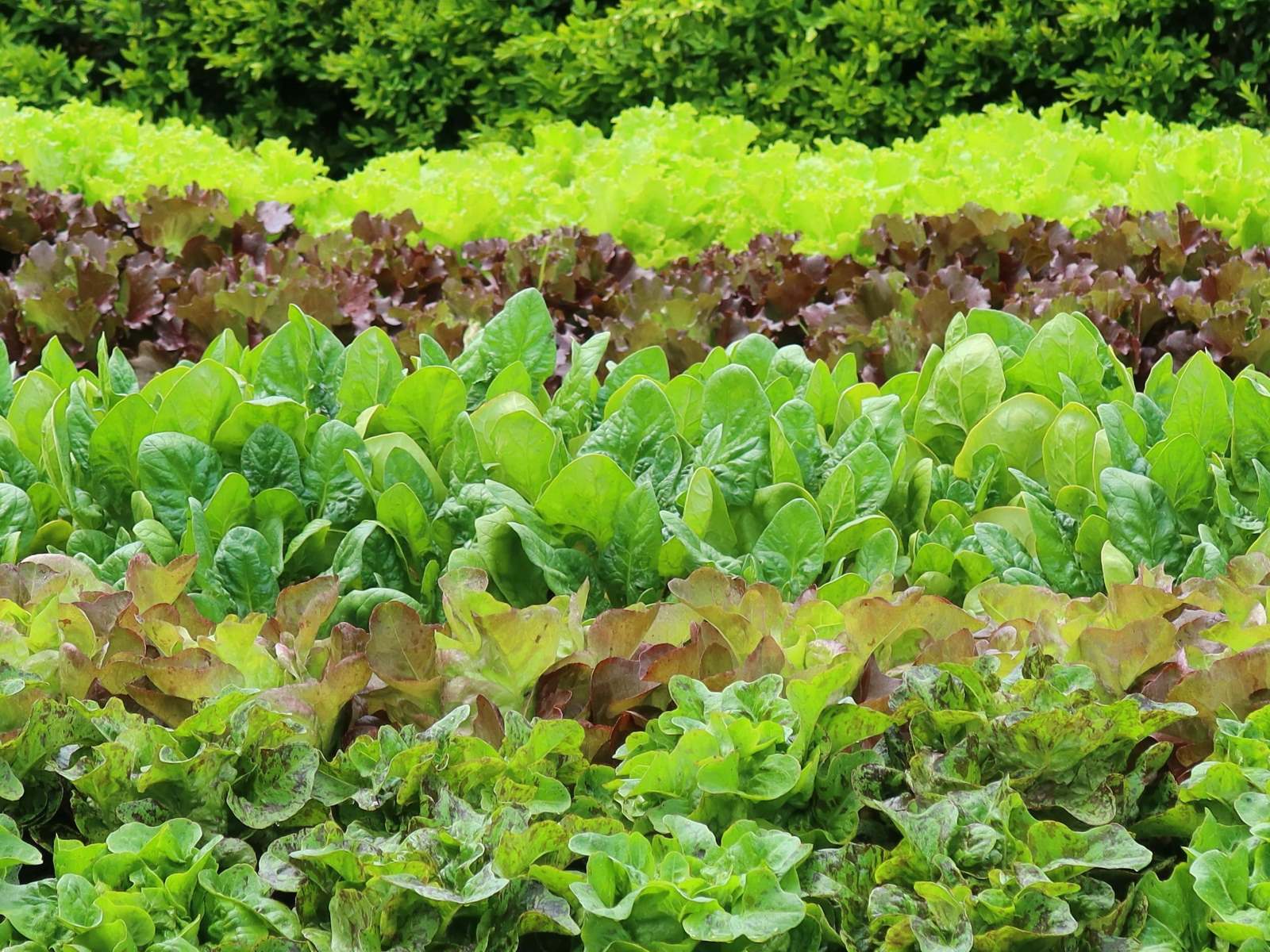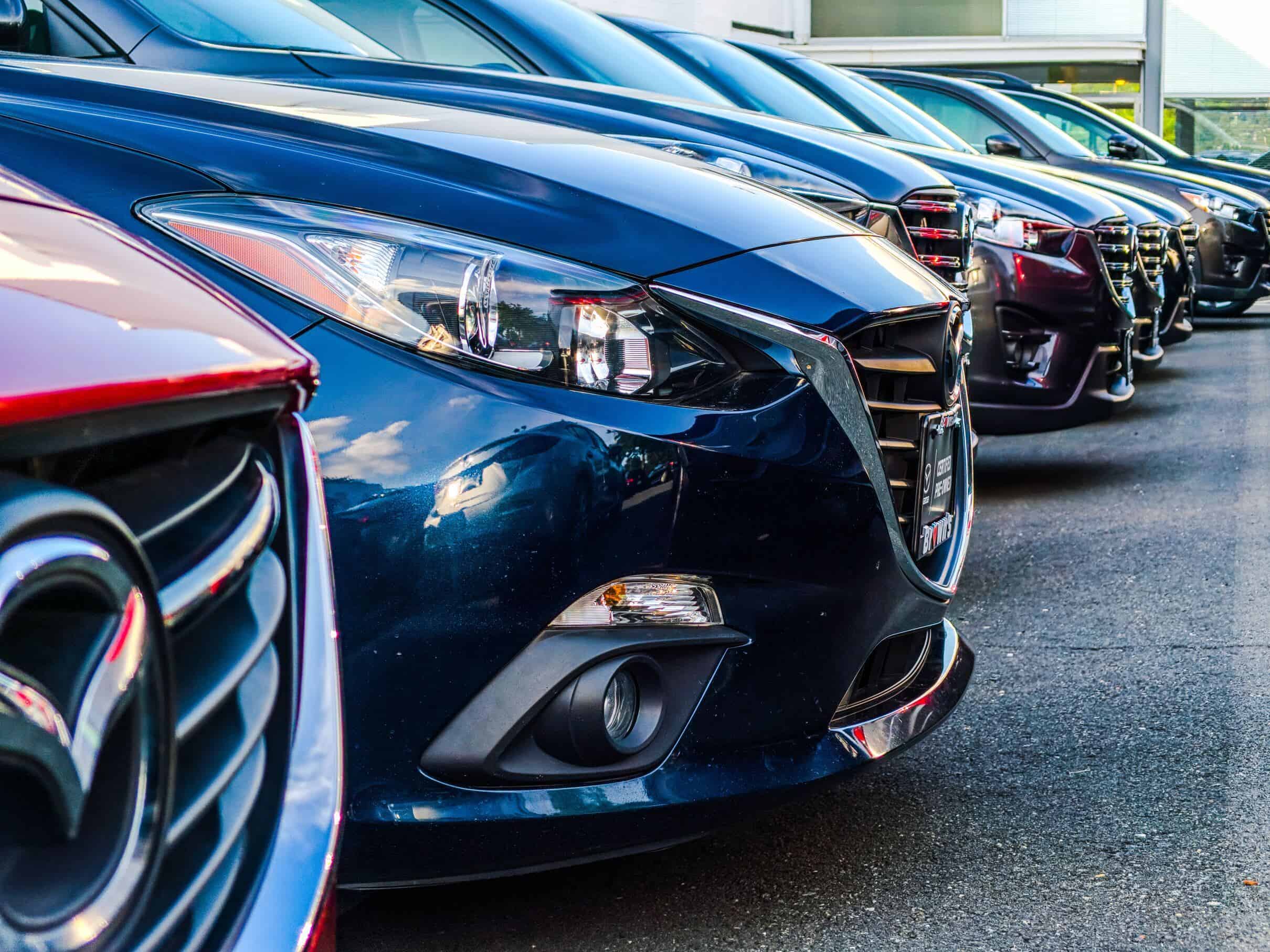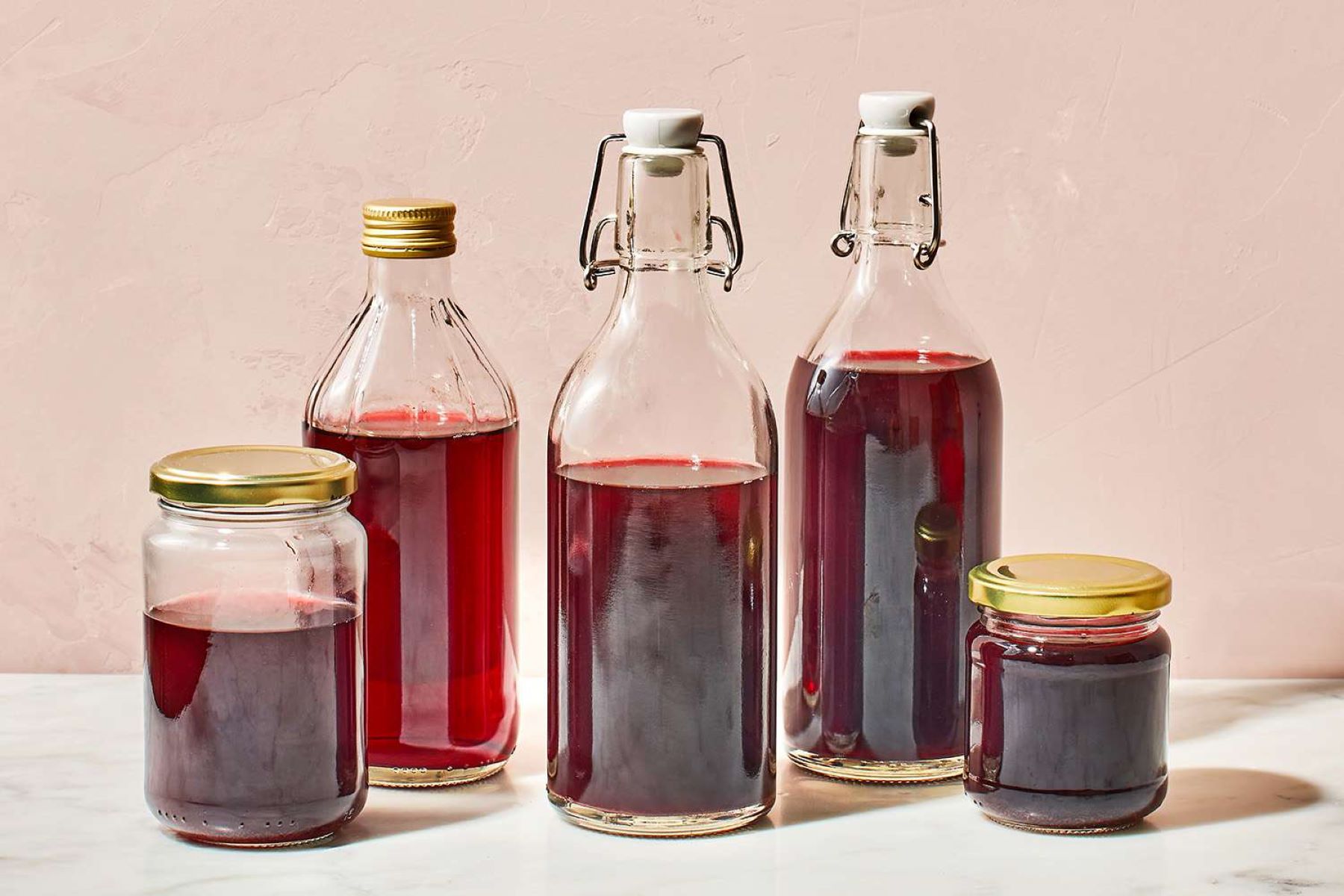Home>Food and Cooking>The Ultimate Guide To Growing Romaine Lettuce In Containers


Food and Cooking
The Ultimate Guide To Growing Romaine Lettuce In Containers
Published: January 15, 2024
Learn how to grow fresh and crispy romaine lettuce in containers with our ultimate guide. Perfect for food and cooking enthusiasts.
(Many of the links in this article redirect to a specific reviewed product. Your purchase of these products through affiliate links helps to generate commission for Regretless.com, at no extra cost. Learn more)
Table of Contents
Introduction
Romaine lettuce, also known as cos lettuce, is a popular leafy green vegetable that is not only delicious but also packed with essential nutrients. Its crisp, elongated leaves make it a versatile ingredient in salads, sandwiches, and wraps. One of the most rewarding experiences for a food enthusiast is growing their own romaine lettuce in containers. Whether you have limited outdoor space or simply prefer the convenience of container gardening, cultivating romaine lettuce in containers is a practical and enjoyable endeavor.
In this comprehensive guide, we will walk you through the step-by-step process of growing romaine lettuce in containers. From choosing the right container and selecting the best soil to harvesting your homegrown produce, we will cover everything you need to know to ensure a successful and bountiful harvest. By the end of this guide, you will be equipped with the knowledge and confidence to embark on your own container gardening journey and enjoy a fresh supply of crisp, flavorful romaine lettuce at your fingertips. Let's dive in and explore the wonderful world of container gardening with romaine lettuce!
Read more: How To Chop Romaine Lettuce
Choosing the Right Container
Selecting the right container is a crucial first step in successfully growing romaine lettuce. When it comes to choosing a container for your romaine lettuce, there are several key factors to consider to ensure optimal growth and yield.
Container Size
The size of the container plays a significant role in the growth and development of romaine lettuce. It is recommended to choose a container that is at least 8 to 12 inches deep to accommodate the extensive root system of the lettuce. Additionally, the width of the container should provide ample space for multiple lettuce plants, allowing them to thrive without overcrowding.
Drainage
Proper drainage is essential to prevent waterlogged soil, which can lead to root rot and other moisture-related issues. Look for containers that have drainage holes at the bottom to allow excess water to escape. Alternatively, you can drill additional drainage holes if necessary to ensure adequate drainage for your romaine lettuce plants.
Material
Containers are available in various materials, including plastic, terracotta, ceramic, and fabric. Each material has its own advantages and considerations. Plastic containers are lightweight and retain moisture well, while terracotta and ceramic containers offer better insulation and aesthetic appeal. Fabric containers provide excellent aeration and prevent overwatering. Consider the environmental conditions in your area and the specific needs of romaine lettuce when choosing the most suitable container material.
Read more: The Ultimate Guide To Growing Orbeez
Mobility
If you plan to move your container-grown romaine lettuce to different locations to optimize sunlight exposure or protect the plants from extreme weather, consider the mobility of the container. Lightweight containers with built-in handles or wheels offer convenience when relocating the lettuce plants as needed.
Number of Plants
Determine the number of romaine lettuce plants you intend to grow in each container. This will influence the size and spacing requirements, ensuring that the container can accommodate the desired quantity of plants without overcrowding.
By carefully considering these factors and selecting the right container, you can create an optimal environment for your romaine lettuce to thrive and flourish, setting the stage for a successful container gardening experience.
Selecting the Best Soil
Choosing the right soil is fundamental to the success of growing romaine lettuce in containers. The soil serves as the primary medium for root development, nutrient uptake, and water retention, making it essential to select a high-quality soil blend tailored to the specific needs of romaine lettuce.
Characteristics of Ideal Soil
The ideal soil for romaine lettuce should offer a balanced combination of moisture retention, aeration, and nutrient availability. A well-draining soil mix is crucial to prevent waterlogging, which can lead to root rot and other moisture-related issues. Additionally, the soil should provide adequate aeration to facilitate oxygen exchange for the roots, promoting healthy growth and development.
Recommended Soil Mix
A recommended soil mix for container-grown romaine lettuce consists of a combination of high-quality potting mix and organic compost. Potting mix provides a lightweight and well-draining base, while organic compost enriches the soil with essential nutrients, promoting robust leafy growth and overall plant vigor.
DIY Soil Blend
For those who prefer a hands-on approach, creating a DIY soil blend for romaine lettuce containers is a rewarding option. A simple yet effective DIY soil blend can be achieved by combining equal parts of potting mix, perlite or vermiculite for improved drainage, and well-aged compost. This blend offers a balanced foundation for romaine lettuce to thrive, ensuring optimal growing conditions within the container environment.
Considerations for Nutrient Availability
In addition to selecting a well-draining soil mix, it is important to consider the nutrient requirements of romaine lettuce. The soil should be enriched with organic matter and balanced nutrients to support the vigorous growth of the lettuce plants. Incorporating slow-release organic fertilizers into the soil mix can provide a sustained supply of essential nutrients, promoting healthy foliage and robust root development throughout the growing season.
pH Level
The pH level of the soil is another critical factor to consider when selecting the best soil for romaine lettuce. Romaine lettuce thrives in slightly acidic to neutral soil with a pH range of 6.0 to 7.0. Testing the pH level of the soil and making necessary adjustments using organic amendments can create an optimal growing environment for romaine lettuce, ensuring that the plants can efficiently absorb nutrients from the soil.
By carefully selecting and preparing the best soil for container-grown romaine lettuce, you can create an optimal growing environment that supports healthy and productive lettuce plants. The right soil blend will provide the essential foundation for robust root development, nutrient uptake, and overall plant vitality, setting the stage for a successful container gardening experience with flavorful and crisp romaine lettuce at your fingertips.
Planting Romaine Lettuce
Planting romaine lettuce in containers marks an exciting phase in the journey of nurturing this vibrant leafy green. The process of planting romaine lettuce involves several key steps that are essential for establishing strong and healthy plants within the confines of a container environment.
Seed Selection
Selecting high-quality romaine lettuce seeds is the first step in the planting process. Opt for certified organic seeds from reputable suppliers to ensure the best possible start for your lettuce plants. Romaine lettuce seeds are available in various cultivars, each offering unique characteristics such as leaf color, texture, and resistance to specific environmental conditions. Consider your growing environment and personal preferences when choosing the most suitable romaine lettuce seed variety for your container garden.
Germination and Seedling Development
Before planting the seeds, it is beneficial to initiate the germination process by pre-soaking the seeds in water for several hours. This encourages the seeds to swell and kick-starts the germination process, leading to quicker and more uniform seedling emergence. Once the seeds have been pre-soaked, plant them in the prepared soil mix at the recommended depth, typically around 1/4 to 1/2 inch. Ensure that the soil is consistently moist but not waterlogged to support the germination and early growth of the romaine lettuce seedlings.
Spacing and Depth
When planting romaine lettuce in containers, it is important to consider the spacing and depth requirements to accommodate the mature size of the lettuce plants. Space the seeds or seedlings according to the recommended spacing guidelines, typically 6 to 8 inches apart, to allow ample room for the plants to develop without overcrowding. Additionally, ensure that the seeds are planted at the appropriate depth to facilitate successful germination and establishment of healthy root systems within the container environment.
Temperature and Moisture Management
Maintaining optimal temperature and moisture levels is crucial during the initial stages of planting romaine lettuce. Ensure that the container is placed in a location with consistent temperatures conducive to seed germination and seedling growth. Additionally, monitor the moisture levels in the soil to prevent it from drying out, as adequate moisture is essential for the successful establishment of romaine lettuce seedlings.
Thinning and Transplanting
As the romaine lettuce seedlings continue to grow, thinning may be necessary to provide adequate space for the remaining plants to thrive. Carefully remove excess seedlings, leaving behind the strongest and healthiest individuals to reach their full potential within the container. If transplanting seedlings from seed trays or starter pots, handle the delicate roots with care to minimize disturbance and ensure a smooth transition into the container environment.
By following these essential steps and best practices for planting romaine lettuce in containers, you can establish a strong foundation for robust and productive lettuce plants. This sets the stage for the next phases of growth, including watering, fertilizing, and providing adequate sunlight, as the romaine lettuce flourishes within the confines of its container home.
Watering and Fertilizing
Watering and fertilizing are critical aspects of nurturing healthy and thriving romaine lettuce plants in containers. Properly managing the water supply and providing essential nutrients are essential for sustaining vigorous growth and ensuring a bountiful harvest of crisp, flavorful lettuce leaves.
Watering Practices
Consistent and adequate watering is essential for the optimal growth of romaine lettuce in containers. The moisture requirements of lettuce plants must be carefully managed to prevent both underwatering and overwatering, which can adversely affect the health and productivity of the plants.
Monitoring Soil Moisture: Regularly monitor the moisture levels in the soil to ensure that it remains consistently moist but not waterlogged. The top inch of the soil should be kept slightly damp, providing the ideal growing conditions for romaine lettuce. Use a soil moisture meter or perform a simple finger test to gauge the moisture content and adjust the watering frequency accordingly.
Watering Frequency: Depending on environmental conditions, the size of the container, and the stage of plant growth, romaine lettuce may require watering every 1 to 2 days. However, it is crucial to adjust the frequency based on the specific needs of the plants, ensuring that they receive adequate hydration without being subjected to prolonged periods of waterlogged soil.
Watering Techniques: When watering romaine lettuce in containers, employ gentle watering techniques to prevent soil disturbance and damage to the delicate foliage. Use a watering can with a fine rose attachment or a gentle spray nozzle to deliver a controlled and even distribution of water, promoting efficient absorption and minimizing runoff.
Fertilizing Regimen
Providing a balanced and nutrient-rich diet is essential for the robust growth and development of romaine lettuce plants in containers. Implementing a well-designed fertilizing regimen ensures that the lettuce plants receive the essential nutrients necessary for producing vibrant and flavorful leaves.
Organic Fertilizers: Opt for organic fertilizers specifically formulated for leafy greens, as they provide a balanced blend of essential nutrients without the risk of chemical buildup in the soil. Organic fertilizers promote healthy foliage growth, enhance flavor, and contribute to the overall vitality of romaine lettuce plants.
Application Frequency: Begin fertilizing the romaine lettuce plants approximately 3 to 4 weeks after planting, and continue to apply fertilizer every 2 to 3 weeks throughout the growing season. This consistent application schedule ensures that the plants receive a sustained supply of nutrients to support their ongoing growth and leaf production.
Fertilizer Dilution: When applying liquid fertilizers, dilute them to the recommended strength to prevent over-fertilization, which can lead to nutrient imbalances and potential damage to the plants. Follow the manufacturer's guidelines for proper dilution ratios, ensuring that the romaine lettuce plants receive the appropriate concentration of nutrients without the risk of fertilizer burn.
By implementing effective watering practices and a well-managed fertilizing regimen, you can provide the optimal growing conditions for romaine lettuce in containers, supporting their vigorous growth and ensuring a plentiful harvest of fresh, crisp leaves. These essential care practices contribute to the overall success of container-grown romaine lettuce, allowing you to enjoy a continuous supply of homegrown, flavorful greens throughout the growing season.
Providing Adequate Sunlight
Ensuring that container-grown romaine lettuce receives adequate sunlight is paramount to its overall health and productivity. Sunlight is the primary energy source for plants, driving the process of photosynthesis and influencing various aspects of growth, including leaf development, flavor enhancement, and nutrient synthesis. When cultivating romaine lettuce in containers, providing the right amount of sunlight is essential for maximizing its potential and yielding a plentiful supply of vibrant, crisp leaves.
Sunlight Requirements
Romaine lettuce thrives in full sun to partial shade, requiring a minimum of 6 hours of direct sunlight per day for optimal growth. When selecting a location for your lettuce containers, prioritize areas that receive ample sunlight, such as south-facing balconies, patios, or windowsills. If outdoor space is limited, consider utilizing grow lights or supplemental lighting to ensure that the romaine lettuce plants receive the necessary light exposure.
Container Placement
Strategic placement of the containers is crucial in maximizing sunlight exposure for romaine lettuce. Position the containers in a location where they can receive direct sunlight during the morning and early afternoon, allowing the plants to harness the energy needed for robust growth. Additionally, consider the surrounding environment to minimize potential obstructions that may cast shadows on the containers, ensuring consistent and uninterrupted sunlight exposure for the lettuce plants.
Sunlight Management
While ample sunlight is essential for romaine lettuce, it is equally important to protect the plants from excessive heat and potential sun damage. During periods of intense sunlight and high temperatures, provide partial shading or relocate the containers to a slightly shadier area to prevent the lettuce from becoming stressed or overheated. Monitoring the intensity and duration of sunlight exposure allows for proactive adjustments to optimize growing conditions for the romaine lettuce plants.
Seasonal Considerations
As the seasons change, the intensity and duration of sunlight fluctuate, impacting the light exposure received by container-grown romaine lettuce. During the warmer months, ensure that the lettuce containers are shielded from extreme heat and direct midday sun, while in cooler months, position the containers to maximize sunlight absorption and warmth. Adapting to seasonal variations in sunlight patterns ensures that the romaine lettuce plants continue to thrive throughout the year.
Benefits of Adequate Sunlight
Providing adequate sunlight offers numerous benefits for container-grown romaine lettuce. It promotes strong, compact growth, enhances leaf color and flavor, and supports the efficient utilization of nutrients. Furthermore, sufficient sunlight exposure contributes to the development of sturdy, well-formed leaves, increasing the overall yield and quality of the harvested lettuce.
By prioritizing the provision of adequate sunlight, you can create an optimal growing environment for romaine lettuce in containers, fostering robust growth and ensuring a continuous supply of fresh, flavorful leaves. This attention to sunlight management plays a pivotal role in the success of container gardening, allowing you to experience the joy of cultivating vibrant and nutritious romaine lettuce at home.
Managing Pests and Diseases
Maintaining a vigilant approach to managing pests and diseases is essential for preserving the health and vitality of container-grown romaine lettuce. While container gardening offers a degree of protection against certain pests and soil-borne diseases, it is crucial to implement proactive measures to prevent and address potential issues that may compromise the well-being of the lettuce plants.
Preventive Strategies
Implementing preventive strategies is the first line of defense against pests and diseases. Regularly inspect the romaine lettuce plants for early signs of pest infestation or disease symptoms, including wilting, discoloration, and unusual spots on the leaves. By promptly identifying and addressing any abnormalities, you can mitigate the risk of widespread damage and ensure the continued health of the lettuce plants.
Integrated Pest Management (IPM)
Adopting an integrated pest management approach is a sustainable and effective method for controlling pests while minimizing environmental impact. IPM involves a combination of cultural, biological, and mechanical control methods to manage pest populations. For instance, introducing beneficial insects such as ladybugs and lacewings can help control aphids and other common pests, reducing the reliance on chemical interventions.
Natural Remedies
Incorporating natural remedies and deterrents can serve as a proactive measure to deter pests and mitigate disease development. For example, companion planting aromatic herbs such as basil and cilantro near romaine lettuce containers can repel pests and create a natural barrier against infestations. Additionally, using organic neem oil or insecticidal soap can effectively control common pests such as aphids and caterpillars without compromising the health of the lettuce plants.
Disease Management
Preventing soil-borne diseases is critical for maintaining the overall health of romaine lettuce. Practicing crop rotation by alternating the location of lettuce containers each growing season can help reduce the risk of disease buildup in the soil. Additionally, ensuring proper air circulation around the plants and avoiding overhead watering can minimize the conditions conducive to disease development, promoting a healthier growing environment for the lettuce.
Vigilance and Monitoring
Regular monitoring of the romaine lettuce plants is essential for early pest and disease detection. By staying observant and proactive, you can promptly address any issues that arise, preventing them from escalating and impacting the overall well-being of the container-grown lettuce. Engaging in consistent monitoring allows for timely interventions, preserving the vitality and productivity of the romaine lettuce.
By implementing these proactive strategies and maintaining a watchful eye on the health of the romaine lettuce plants, you can effectively manage pests and diseases in container gardening. This proactive approach contributes to the overall success of cultivating vibrant and healthy romaine lettuce, ensuring a continuous supply of fresh, flavorful leaves for your culinary endeavors.
Harvesting Romaine Lettuce
Harvesting romaine lettuce is a highly rewarding culmination of the container gardening journey, offering the opportunity to savor the fruits of your labor and enjoy the crisp, flavorful bounty of homegrown greens. Knowing the optimal time to harvest romaine lettuce and employing proper harvesting techniques are essential for preserving the quality and taste of the harvested leaves.
Timing of Harvest
Romaine lettuce is typically ready for harvest approximately 60 to 75 days after planting, depending on the specific cultivar and environmental conditions. The ideal time to harvest romaine lettuce is when the outer leaves have reached a desirable size, typically 6 to 8 inches in length, and the center leaves remain tightly clustered and compact. Avoid allowing the lettuce to mature excessively, as this may lead to a bitter taste and a decline in leaf tenderness. Regularly inspect the lettuce plants for signs of maturity, and harvest the outer leaves as needed to encourage ongoing leaf production.
Harvesting Techniques
When harvesting romaine lettuce, employ gentle and precise techniques to ensure minimal disturbance to the plants and the surrounding foliage. Utilize clean, sharp garden shears or scissors to snip the outer leaves at the base, near the soil level, taking care to avoid damaging the inner leaves and the growing point of the plant. Alternatively, gently grasp the outer leaves near the base and twist them to detach from the stem, allowing the remaining leaves to continue growing. By employing these careful harvesting methods, you can maintain the overall health and vitality of the romaine lettuce plants, promoting sustained leaf production for future harvests.
Continuous Harvesting
One of the remarkable attributes of romaine lettuce is its capacity for continuous harvesting. As you selectively harvest the outer leaves, the inner leaves continue to develop, allowing for a continuous supply of fresh, tender greens. This approach not only ensures a steady yield of flavorful lettuce but also encourages the plants to produce new leaves, promoting prolonged productivity throughout the growing season.
Storage and Consumption
Upon harvesting romaine lettuce, promptly rinse the leaves under cold water to remove any debris or soil particles. Gently pat the leaves dry with a clean cloth or paper towel and store them in a perforated plastic bag or airtight container in the refrigerator. Properly stored, romaine lettuce can remain fresh for up to 7 to 10 days, retaining its crisp texture and vibrant flavor. Whether incorporated into refreshing salads, used as a crisp topping for sandwiches, or enjoyed as a nutritious wrap, the freshly harvested romaine lettuce elevates culinary creations with its unparalleled freshness and taste.
By mastering the art of harvesting romaine lettuce, you can fully embrace the satisfaction of homegrown produce and relish the unparalleled flavor and quality of freshly harvested greens. This final stage of the container gardening journey signifies the culmination of your efforts, allowing you to indulge in the delightful experience of cultivating, harvesting, and enjoying the vibrant and nutritious romaine lettuce from your own container garden.
Conclusion
Embarking on the journey of growing romaine lettuce in containers offers a rewarding and enriching experience that encompasses the joys of nurturing vibrant greenery, savoring the flavors of freshly harvested leaves, and embracing the art of sustainable and accessible gardening. Throughout this comprehensive guide, we have delved into the intricacies of container gardening with romaine lettuce, exploring the essential steps and best practices for cultivating robust and flavorful greens within the confines of containers.
From the meticulous selection of the right container and soil to the nurturing care of watering, fertilizing, and sunlight management, every aspect of container gardening with romaine lettuce contributes to a holistic and fulfilling journey. The process of planting, tending, and ultimately harvesting the crisp, elongated leaves embodies the artistry of homegrown produce and the gratification of cultivating a sustainable and bountiful harvest.
The versatility of romaine lettuce extends beyond its culinary applications, transcending into a source of pride and connection with nature. As each leaf is carefully harvested and incorporated into culinary creations, the essence of container-grown romaine lettuce permeates the dining experience, infusing it with freshness, flavor, and the satisfaction of homegrown abundance.
Furthermore, the journey of container gardening with romaine lettuce fosters a deeper appreciation for the interconnectedness of food, nature, and well-being. It embodies the principles of sustainable living, promoting the utilization of limited space for cultivating nutritious greens, and fostering a sense of self-sufficiency and environmental consciousness.
As we conclude this guide, the journey of growing romaine lettuce in containers transcends the realm of horticulture, embodying a holistic and enriching experience that resonates with the spirit of creativity, sustainability, and wholesome living. Whether adorning a crisp salad, enhancing a delectable sandwich, or serving as a vibrant centerpiece on the dining table, the homegrown romaine lettuce from your container garden encapsulates the essence of freshness, vitality, and the fulfillment of nurturing nature's bounty.
In essence, the journey of container gardening with romaine lettuce culminates in a celebration of the natural world, the art of sustainable living, and the simple pleasures of sowing, tending, and harvesting the vibrant and nutritious produce that enriches our lives. It is a testament to the timeless connection between humanity and the earth, and a reminder of the abundance that flourishes within the confines of a container, offering a bounty of crisp, flavorful romaine lettuce to delight the senses and nourish the soul.






